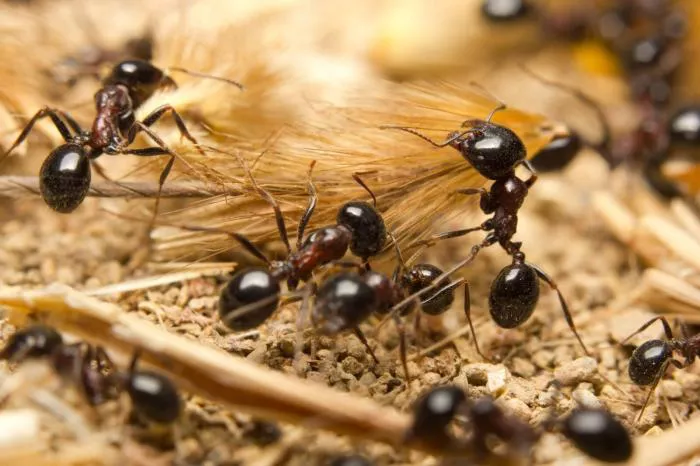Biosecurity advocates have sharply criticized the Albanese government for its inadequate response to the threat posed by imported fire ants, a so-called ‘super pest’ that endangers Australia’s native wildlife. The backlash follows a parliamentary inquiry that revealed serious gaps in the government’s approach to controlling this invasive species.
Serious Concerns Over Government Response
On Tuesday, the Invasive Species Council expressed dismay at the government’s handling of recommendations from a recent parliamentary inquiry into fire ants. Advocacy manager Reece Pianta emphasized that the inquiry’s findings highlighted a troubling lack of resources allocated for the eradication of these aggressive pests.
“The evidence presented during the senate inquiry was unequivocal: the current funding and resources are insufficient to effectively eradicate this super pest,” Pianta stated, underscoring the urgency of the situation.
For over two decades, Australian authorities have struggled to eliminate the invasive fire ants, but their spread has significantly accelerated in recent years. These highly aggressive insects have been detected increasingly outside designated containment zones, notably in southeastern Queensland and even extending into New South Wales.
Economic and Ecological Impact
If left unchecked, the proliferation of fire ants could impose a staggering economic burden on Australia, with estimates suggesting costs could exceed $2 billion annually. A recent report by the Australia Institute projected that unchecked infestations could also lead to the loss of native wildlife and potentially result in six fatalities each year.
Pianta pointed out that the recent parliamentary inquiry represented a critical opportunity for the government to revitalize efforts to eradicate fire ants by reviewing funding and resources urgently. Instead, the government has opted for a delayed review process, with no planned assessment until late 2025.
“This delay is extremely disappointing,” he lamented.
Threats to Native Wildlife
The ramifications of fire ant infestations extend beyond economic concerns. Pianta highlighted the direct threats posed to vulnerable species in Queensland, particularly koalas. The Threatened Species Commissioner has warned that populations of iconic Australian animals, including echidnas, platypuses, and turtles, are at risk of decline due to fire ant invasions.
Despite the gravity of the situation, the government rejected recommendations from the inquiry aimed at bolstering the fire ant suppression task force. Officials asserted that this initiative falls under the jurisdiction of the Queensland government and is managed independently of the national containment and eradication program.
“This shows a failure to recognize the urgency of ramping up suppression efforts,” Pianta stated. He emphasized that the rising fire ant population is a direct result of inadequate personnel, bait, and equipment necessary for effective suppression.
“This is not a serious response to a serious problem,” he concluded.
Government’s Funding Commitment
In response to the growing crisis, federal, state, and territory governments have pledged a total of $1.28 billion by 2027 to combat the fire ant invasion. However, many advocates remain skeptical about the efficacy of these funds in addressing the immediate needs for eradication and suppression.
Nationals Senator Matt Canavan, who chaired the inquiry, countered criticisms by stating that the government supports the majority of the report’s recommendations. He expressed optimism about a newfound bipartisan commitment to addressing the fire ant issue.
“As a result of the increased focus during the inquiry, the government has significantly boosted funding for the eradication efforts aimed at red imported fire ants,” Canavan said. He hopes that this increase in financial support will yield tangible benefits in managing the risks associated with this invasive species.
The Path Forward
While the government’s commitment of $1.28 billion is a step in the right direction, advocates urge immediate action to address the pressing threats posed by fire ants. Experts recommend a comprehensive review of existing resources, funding allocations, and strategic plans to ensure that the eradication efforts are effectively implemented and monitored.
The situation demands an urgent response to protect Australia’s unique wildlife and mitigate potential economic losses. As fire ants continue to encroach on new territories, proactive measures are essential to prevent a full-blown ecological disaster.
Conclusion
The campaign against imported fire ants is at a critical juncture. With the Albanese government facing scrutiny over its response to this invasive species, the need for immediate action has never been more apparent. Stakeholders, including environmental advocates and government officials, must collaborate to develop a robust strategy that prioritizes the health of Australia’s ecosystems and the safety of its communities.
As the inquiry highlighted, the risks associated with fire ants extend far beyond simple pest control. They pose a genuine threat to the fabric of Australian biodiversity and the economic well-being of the nation.
Moving forward, it is crucial that both governmental and community efforts align to tackle this invasive threat. The health of Australia’s native wildlife and the resilience of its ecosystems depend on decisive action against the fire ant menace.
Related topics:


